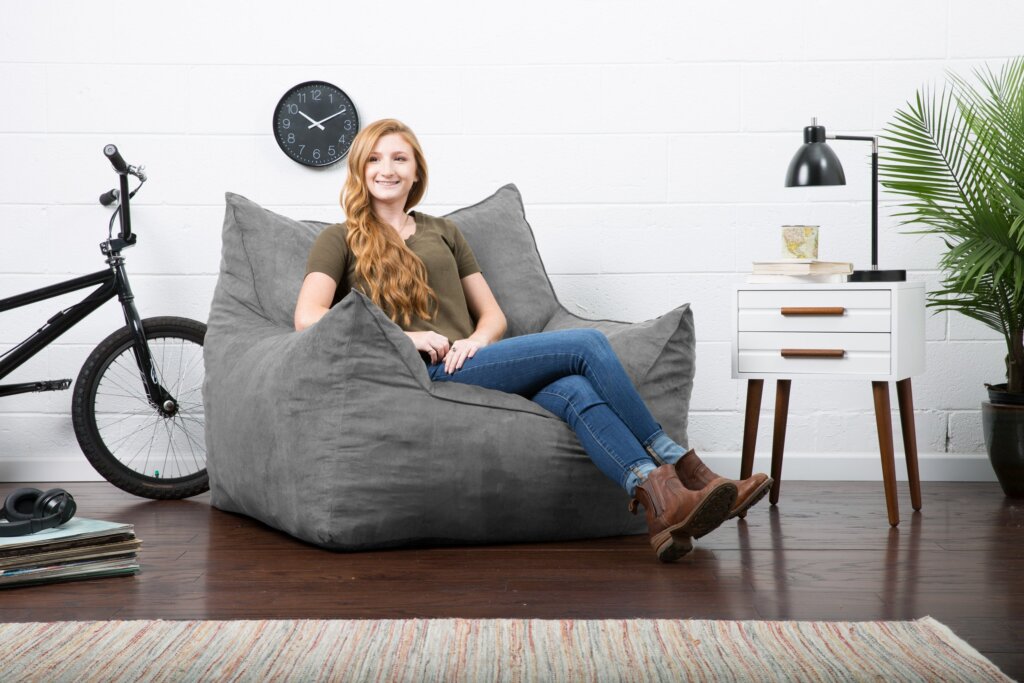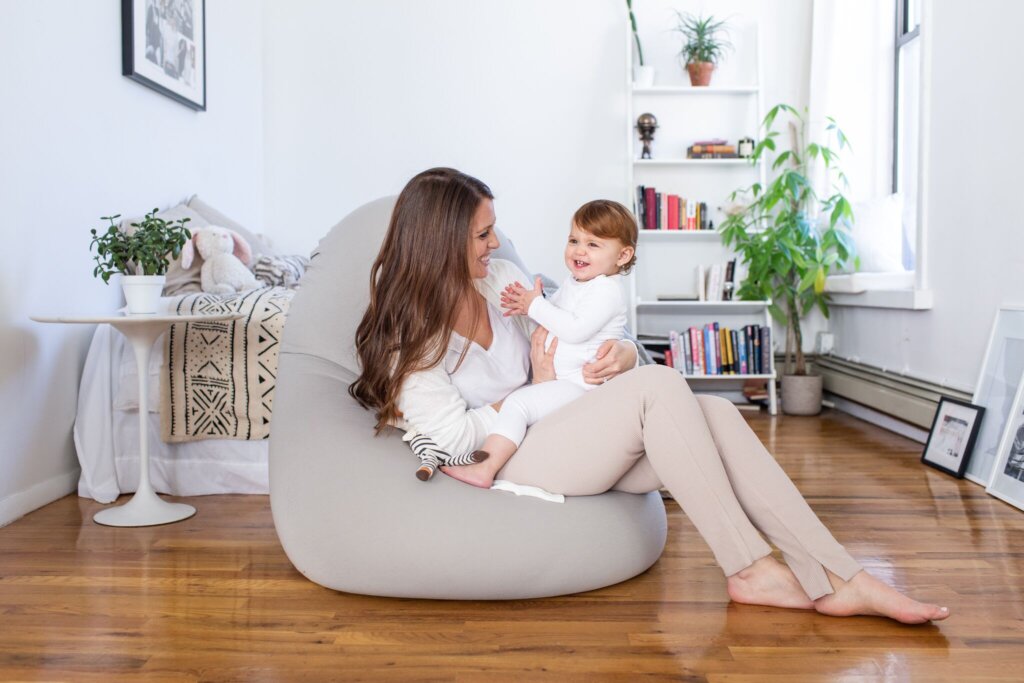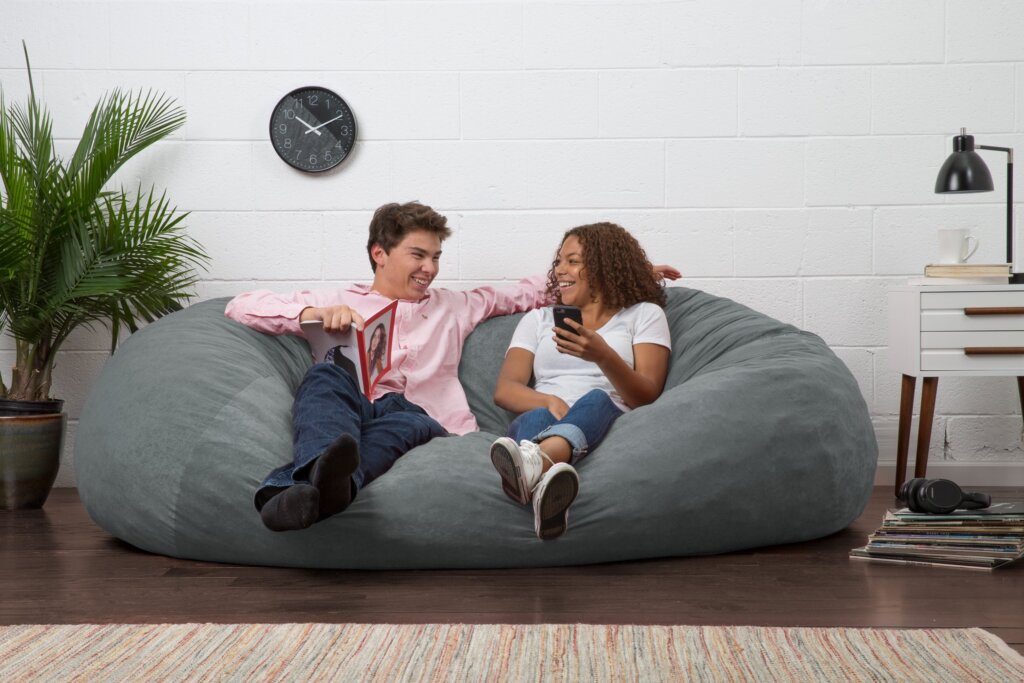History of the Bean Bag Chair | What, How, When?
Posted on Mon, 2 Nov 2020 by Guest
While the world went through a period of political and social upheaval, every aspect of the status quo in Italy was about to undergo revision. Chairs were no exception to this change, either. Pierre Restany, an art critic, spoke about it at length in an essay that was published in 1986 in “Zanotta: Design For Passion.” He noted that people simply didn’t return from protest meetings or assemblies to sit in the rigid Louis XIV armchair, which was the fashion then.
Instead, the bourgeoisie stiff seating was switched out for ergonomics. The movement is now known as the Italian Radical Design, and three thinkers became prominent. They are Cesare Paolini, Piero Gatti, and Franco Teodoro. Together, these minds came up with the concept of a chair that could adapt to various situations by taking different shapes.
And thus, the bean bag was born. A list of the best bean bags available today has been published by Architecture Lab right here, but for now, here’s how the bean bag came to be designed.
Materials for the Bean Bag
Much like a pile of snow, or even water, these chairs could take different physical structures depending on the body of the person sitting on them.
Other Italians were thinking along similar lines but didn’t find much success. Gatti remembered in a 1988 interview that the first attempt was with water mattresses, but that turned out to be too hard. Then, there were inflatables called ‘pneus,’ which is French for tires. There too, the air led to rigidity and reduced comfort. The polyurethane foam followed, but it did not quite respond to the human body as one would expect.
Finally, the designers thought back to the old mattresses with chestnut leaves; something peasants used widely. Basically, a sack is filled with leaves and other such materials, so it takes the shape of the body. In this case, the reasoning was that balls or marbles, basically something spherical and small, could behave like a semi-fluid and mold itself to the shape of the body.
Although buckshots were considered, the lead turned out to be too heavy while the ping-pong balls happened to be too expensive. Finally, they hit on a usable material, foam polystyrene, which is used in heat and sound-proofing. Cutting open the envelope and pouring the balls into a vinyl bag was the first step in the right direction.
They were definitely getting close when it came to the design, but the bean bags hadn’t yet made their impact on the world.
Bean Bags Enter the Market
This only happened after Macy’s took an interest and the American store placed an order. Zanotta became the manufacturer they turned to for producing the bean bags. The real challenge was never coming up with the chair, but rather finding someone to manufacture it. Luckily, the stars were aligned when it came to Zanotta.
Marta Zanotta, the communication and marketing manager of the brand, recalls how it went down. Aurelio Zanotta heard the presentation, and within thirty minutes, he had ten prototypes made. His niece recognized how Aurelio was aware of the potential of the bean bag.
Combining his trademark audacity and far-sightedness, which always helped his business, Aurelio introduced the market to a product that was so out of the box that it became a design icon beyond disputes.
Bean Bags as Icons
As they say, the rest is history. After the order was shipped out to Macy’s, it also made its debut at the Paris Furniture Fair in January 1969. The grand event witnessed the Sacco, or the bean bag, as most of us know it, as an absolute icon of flawless design.
Since then, bean bags have popped up everywhere. You can see it in casual settings like a college dorm room and at places where fashion is carefully upheld. For example, Franca Sozzani, the late Italian Vogue editor, kept a bean bag in her Paris apartment, and it was covered in mink.
Now that it has been over fifty years, the bean bag feels more relevant than ever. In fact, fashion designer Raf Simons ensured that a suite of them was swathed in his fabrics when it came to Kvadrat. Zanotta even made waves in 2018 by opening its first US flagship store in Miami’s Design District. Obviously, it became a splendid affair, attracting people from the worlds of design and art to the Art Basel Miami Beach.
These bean bags cost around $530, which makes it a rather attainable icon, as compared to some other seating arrangements. After all, it becomes a price worth paying if one pays attention to what Restany had to say. The bean bag meets the general need to loosen up how people tend to live.
Final Words
Not just the bean bag, but its manufacturer too, has had a storied history. From being merely a design to being conceptualized as an icon when it comes to seating arrangements, it has been a terrific journey.
Bean bags have been around for over fifty years now but continue to be just as popular. We hope you’ve enjoyed learning about its origins and the efforts that went into enhancing the ergonomics.
Do feel free to reach out to us and share your experiences of using a bean bag. Till next time, Adios!





Suzanne Melton says:
Back in the ’70s, my boyfriend’s mother made “us” a beanbag chair.
When we split up, I made him take it with him.